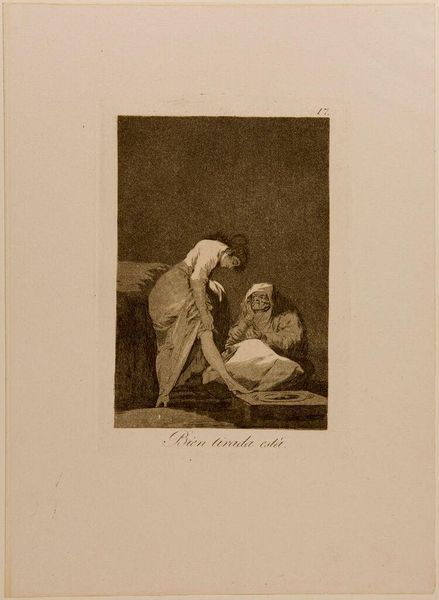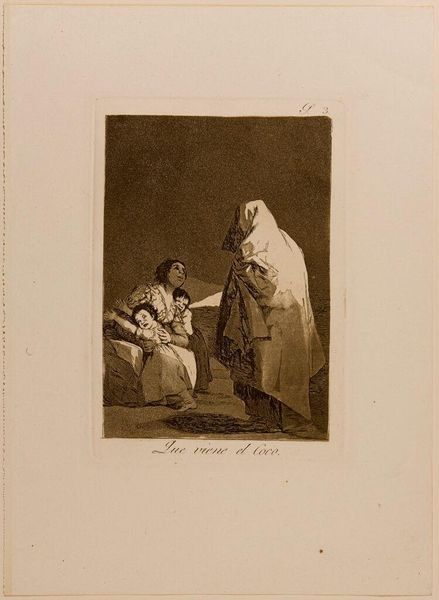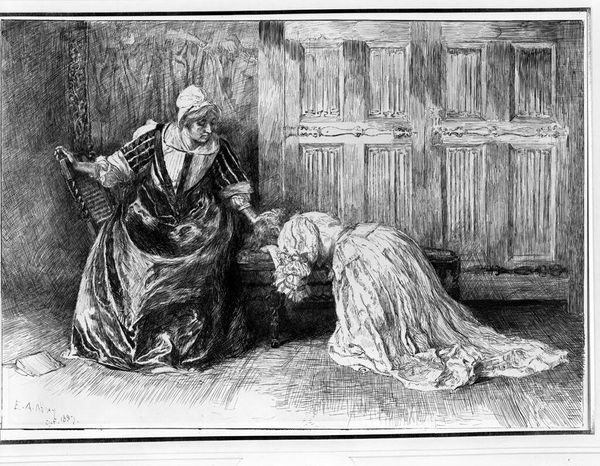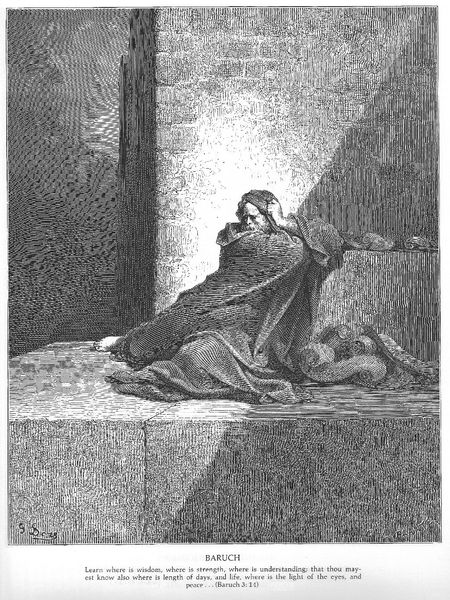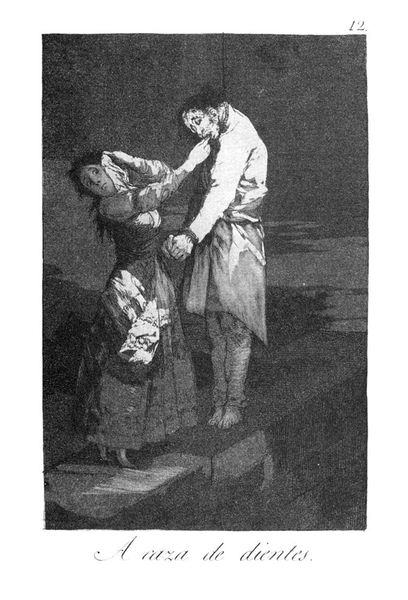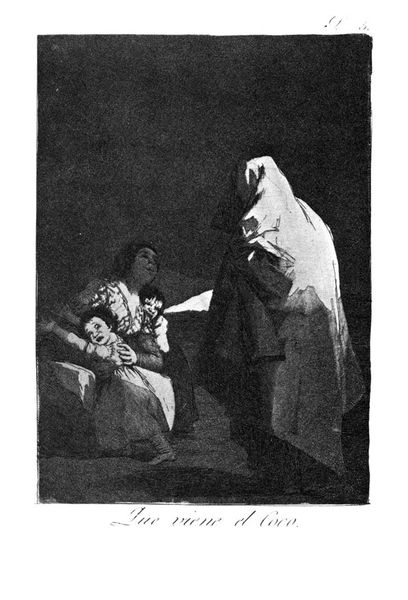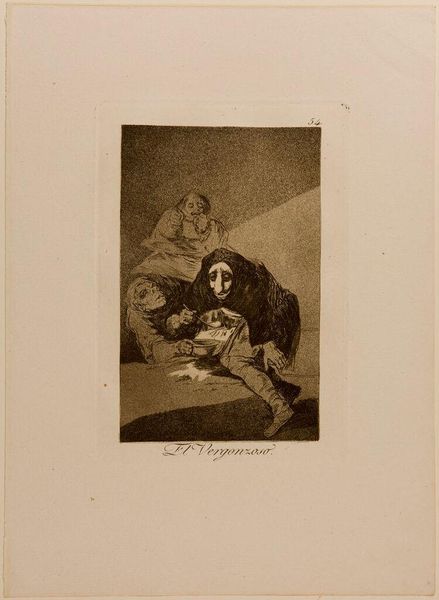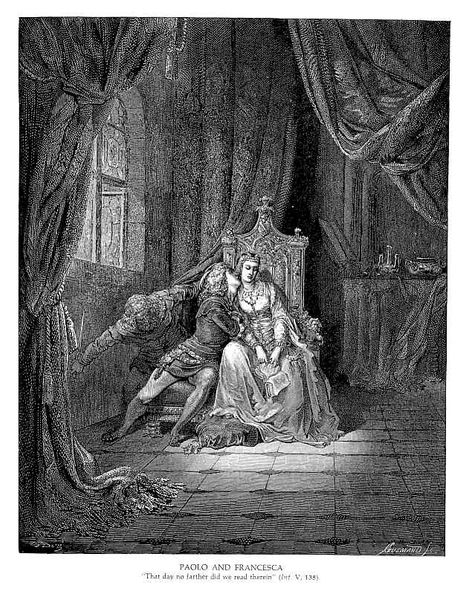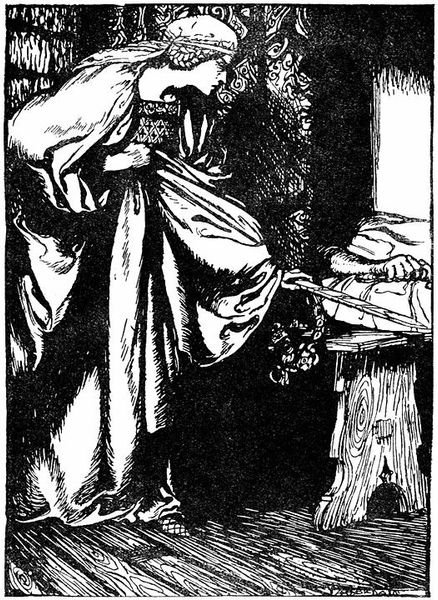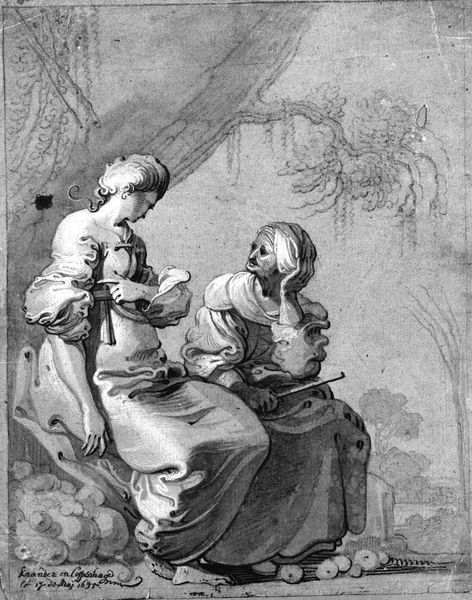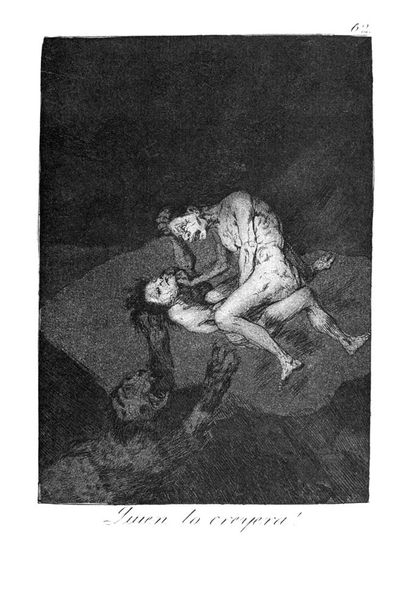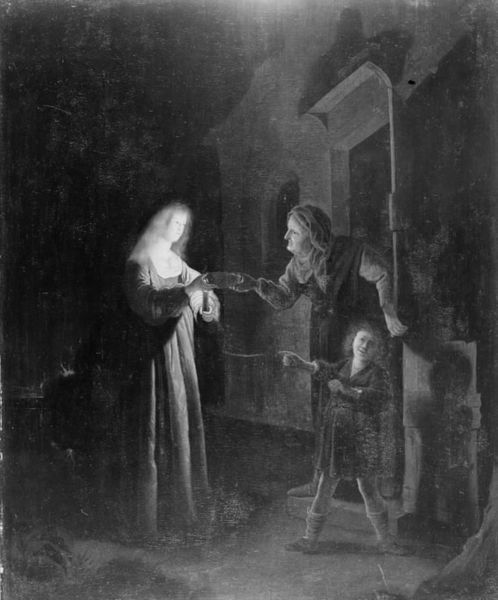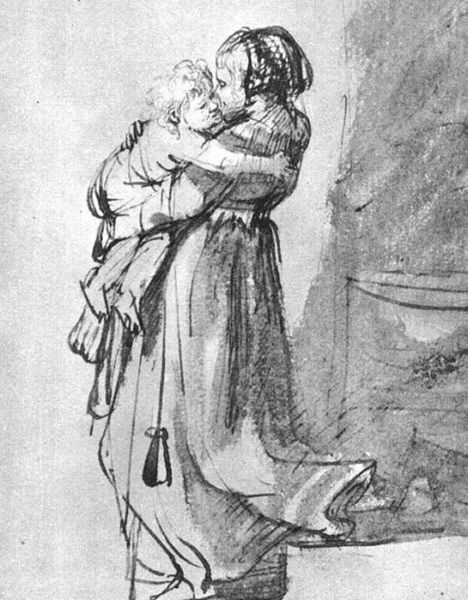
aquatint, print, etching
#
aquatint
#
allegories
#
allegory
#
narrative-art
# print
#
etching
#
figuration
#
romanticism
#
black and white
#
genre-painting
#
history-painting
Dimensions: 21.9 x 15.3 cm
Copyright: Public domain
Curator: Alright, let’s look at Francisco de Goya’s unsettling print, "She is Well Pulled Down," dating back to 1799. It's an etching and aquatint from his 'Los Caprichos' series. My gut reaction? The overwhelming darkness pressing in on those two figures. What hits you? Editor: Definitely the stark contrast – the way the light clings to the younger woman, pulling at the stocking of the older one. Immediately I wonder about the material realities – the labor of textile production, the social layers revealed by even simple clothing. What story are these garments telling? Curator: That tug feels cruel, doesn't it? There's such stark intimacy there. Given Goya’s satirical eye, I read it as an allegory—perhaps youth exploiting age, or maybe a biting commentary on social decline and power imbalances. The series, overall, skewers pretty much every societal ill. Editor: Absolutely, but it's not just allegory, is it? Consider the aquatint process – the painstaking layering, the corrosive acid biting into the metal. The darkness isn't just symbolic; it’s literally etched into the plate. And consider the cost of paper, the printing press itself. All that to circulate these provocative images! Curator: A crucial point. Goya wasn’t just making pretty pictures. The prints were intended to be distributed, to stir debate. It speaks volumes, though, that even with those layers of reproducible material, we can feel this intensely personal feeling, the heavy dread he's known for. Editor: And it begs the question: How many hands touched this image before it reached us? The etcher, the printer, the distributors…Each leaves a trace. I am also really caught up in the making of those garments, like how much of women's life must be invested into the garments of others. It really captures a story of the hands making fabric into clothing. Curator: I’m fascinated, that the Romantic vision – for me the artist pouring emotions into it -- is very material itself. Without tools, without the means of circulation, there's not art. I would agree with you there, yes! Editor: Precisely. Looking closely, what we perceive as 'artistic genius' is interwoven with the material conditions that enabled Goya's vision. A poignant example of the interplay between idea and tangible object. Curator: I keep drifting back to the implied narrative of that darkness behind. Goya makes us feel the imbalance, a world teetering on something quite grim. It seems, there is so much weight to that shadow, more than two centuries after the thing was created! Editor: For me, the brilliance is Goya using something as seemingly straightforward as a piece of clothing to hint at such immense stories about society, making the consumption, and even this print itself a powerful thing.
Comments
No comments
Be the first to comment and join the conversation on the ultimate creative platform.
